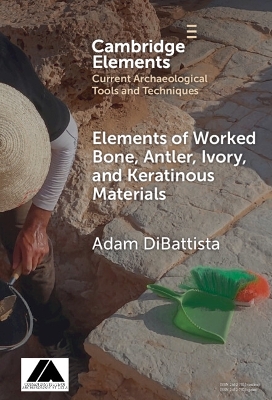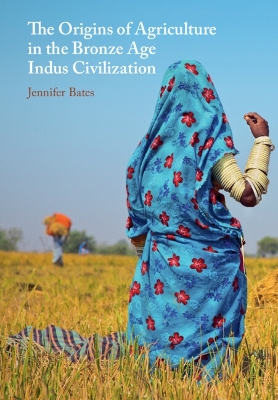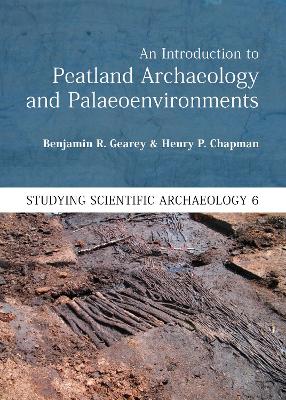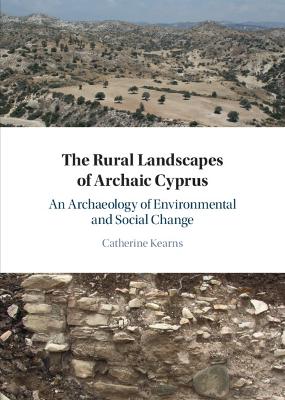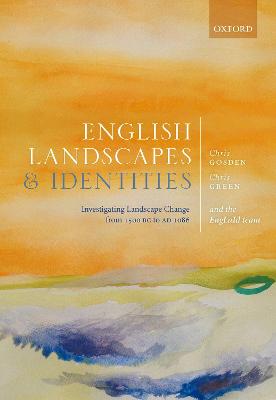Human Transformations of the Earth
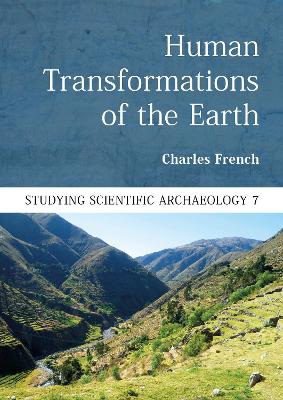 portes grátis
portes grátis
Human Transformations of the Earth
French, Charles
Oxbow Books
09/2022
256
Mole
Inglês
9781789259209
15 a 20 dias
Descrição não disponível.
Preface
Acknowledgements
1. Introduction: Geoarchaeological approaches in archaeology
1.1 Endeavour
1.2 Development of the discipline of geoarchaeology as part of archaeological investigations
1.3 Importance to archaeology
2. Methodological approaches
2.1 Approaches in the field
2.1.1 Landscape to soil-scape
2.1.2 Soils and palaeosols
2.1.3 Formulating research designs
2.2 Basic characterisation techniques
2.2.1 Field prospection and soil/sediment profile description
2.2.2 pH and water quality
2.2.3 Loss-on ignition
2.2.4 Magnetic susceptibility
2.3 More involved techniques
2.3.1 Phosphorus (or phosphate) content
2.3.2 Multi-element analysis
2.3.3 Soil nutrient and fertility status
2.3.4 Micromorphology
2.3.5FTIR, XRF, EDAX, XRD and SEM
2.4 Establishing chronologies: Radiocarbon, OSL and Bayesian statistics
2.5 Scales of resolution
2.6 Soil nomenclature and classification
3. Soil transformation trajectories in temperate European landscapes
3.1 The beginnings to woodland soil development
3.2 Disturbance and degradation of woodland soils
3.3 Agricultural soil development
3.4 Woodland to pasture soils
3.5 Acidification and podzolisation
3.6 Erosion and colluviation
3.7 Alluviation, floodplains and waterlogging
3.8 Wetland soils
3.9 Cumulative soils
4. Soil transformation trajectories in southern Mediterranean landscape systems
4.1 Brown to red Mediterranean soils
4.2 Xeric calcitic soils and soil erosion
4.3 Erosion, alluviation and wadi development
5. Soil transformation trajectories in arid/semi-arid soil systems
5.1 Aridisols
5.2 Colluvial/alluvial systems
5.2.1 The Burj-Masadpur area of the Indus valley, northern India
5.2.2 The central Rio Puerco, New Mexico
5.2.3 The lower Ica valley, southern Peru
5.2.4 The Kerio-Embobut valleys in Marakwet, north-central Kenya
5.3 Terracing and irrigation
5.3.1 Aksum, northern Ethiopia
5.3.2 Konso, southern Ethiopia,
5.3.3 Engaruka, northern Tanzania
5.3.4 Sangayaico in the upper Ica valley, southern Peru
6. Timescales and longevity of soil processes
6.1 Timescales and longevity of soil properties
6.2 Soil horizonation and structural development
6.3 Within-soil illuviation and textural changes: stability, disturbance and erosion
7. Understanding long-term resilience in transformed soils
Bibliography
Appendices
1. Site gazeteer
Acknowledgements
1. Introduction: Geoarchaeological approaches in archaeology
1.1 Endeavour
1.2 Development of the discipline of geoarchaeology as part of archaeological investigations
1.3 Importance to archaeology
2. Methodological approaches
2.1 Approaches in the field
2.1.1 Landscape to soil-scape
2.1.2 Soils and palaeosols
2.1.3 Formulating research designs
2.2 Basic characterisation techniques
2.2.1 Field prospection and soil/sediment profile description
2.2.2 pH and water quality
2.2.3 Loss-on ignition
2.2.4 Magnetic susceptibility
2.3 More involved techniques
2.3.1 Phosphorus (or phosphate) content
2.3.2 Multi-element analysis
2.3.3 Soil nutrient and fertility status
2.3.4 Micromorphology
2.3.5FTIR, XRF, EDAX, XRD and SEM
2.4 Establishing chronologies: Radiocarbon, OSL and Bayesian statistics
2.5 Scales of resolution
2.6 Soil nomenclature and classification
3. Soil transformation trajectories in temperate European landscapes
3.1 The beginnings to woodland soil development
3.2 Disturbance and degradation of woodland soils
3.3 Agricultural soil development
3.4 Woodland to pasture soils
3.5 Acidification and podzolisation
3.6 Erosion and colluviation
3.7 Alluviation, floodplains and waterlogging
3.8 Wetland soils
3.9 Cumulative soils
4. Soil transformation trajectories in southern Mediterranean landscape systems
4.1 Brown to red Mediterranean soils
4.2 Xeric calcitic soils and soil erosion
4.3 Erosion, alluviation and wadi development
5. Soil transformation trajectories in arid/semi-arid soil systems
5.1 Aridisols
5.2 Colluvial/alluvial systems
5.2.1 The Burj-Masadpur area of the Indus valley, northern India
5.2.2 The central Rio Puerco, New Mexico
5.2.3 The lower Ica valley, southern Peru
5.2.4 The Kerio-Embobut valleys in Marakwet, north-central Kenya
5.3 Terracing and irrigation
5.3.1 Aksum, northern Ethiopia
5.3.2 Konso, southern Ethiopia,
5.3.3 Engaruka, northern Tanzania
5.3.4 Sangayaico in the upper Ica valley, southern Peru
6. Timescales and longevity of soil processes
6.1 Timescales and longevity of soil properties
6.2 Soil horizonation and structural development
6.3 Within-soil illuviation and textural changes: stability, disturbance and erosion
7. Understanding long-term resilience in transformed soils
Bibliography
Appendices
1. Site gazeteer
Este título pertence ao(s) assunto(s) indicados(s). Para ver outros títulos clique no assunto desejado.
agriculture; archaeological landscape; Archaeological Method & Theory/Environmental & Earth Sciences; Britain; clearance activity; East Africa; environmental degradation; Holocene; Holocene warming; Landscape Archaeology; Mediterranean; northern India; palaeo-environmental; Peru; Soil; soil system; south-eastern Europe
Preface
Acknowledgements
1. Introduction: Geoarchaeological approaches in archaeology
1.1 Endeavour
1.2 Development of the discipline of geoarchaeology as part of archaeological investigations
1.3 Importance to archaeology
2. Methodological approaches
2.1 Approaches in the field
2.1.1 Landscape to soil-scape
2.1.2 Soils and palaeosols
2.1.3 Formulating research designs
2.2 Basic characterisation techniques
2.2.1 Field prospection and soil/sediment profile description
2.2.2 pH and water quality
2.2.3 Loss-on ignition
2.2.4 Magnetic susceptibility
2.3 More involved techniques
2.3.1 Phosphorus (or phosphate) content
2.3.2 Multi-element analysis
2.3.3 Soil nutrient and fertility status
2.3.4 Micromorphology
2.3.5FTIR, XRF, EDAX, XRD and SEM
2.4 Establishing chronologies: Radiocarbon, OSL and Bayesian statistics
2.5 Scales of resolution
2.6 Soil nomenclature and classification
3. Soil transformation trajectories in temperate European landscapes
3.1 The beginnings to woodland soil development
3.2 Disturbance and degradation of woodland soils
3.3 Agricultural soil development
3.4 Woodland to pasture soils
3.5 Acidification and podzolisation
3.6 Erosion and colluviation
3.7 Alluviation, floodplains and waterlogging
3.8 Wetland soils
3.9 Cumulative soils
4. Soil transformation trajectories in southern Mediterranean landscape systems
4.1 Brown to red Mediterranean soils
4.2 Xeric calcitic soils and soil erosion
4.3 Erosion, alluviation and wadi development
5. Soil transformation trajectories in arid/semi-arid soil systems
5.1 Aridisols
5.2 Colluvial/alluvial systems
5.2.1 The Burj-Masadpur area of the Indus valley, northern India
5.2.2 The central Rio Puerco, New Mexico
5.2.3 The lower Ica valley, southern Peru
5.2.4 The Kerio-Embobut valleys in Marakwet, north-central Kenya
5.3 Terracing and irrigation
5.3.1 Aksum, northern Ethiopia
5.3.2 Konso, southern Ethiopia,
5.3.3 Engaruka, northern Tanzania
5.3.4 Sangayaico in the upper Ica valley, southern Peru
6. Timescales and longevity of soil processes
6.1 Timescales and longevity of soil properties
6.2 Soil horizonation and structural development
6.3 Within-soil illuviation and textural changes: stability, disturbance and erosion
7. Understanding long-term resilience in transformed soils
Bibliography
Appendices
1. Site gazeteer
Acknowledgements
1. Introduction: Geoarchaeological approaches in archaeology
1.1 Endeavour
1.2 Development of the discipline of geoarchaeology as part of archaeological investigations
1.3 Importance to archaeology
2. Methodological approaches
2.1 Approaches in the field
2.1.1 Landscape to soil-scape
2.1.2 Soils and palaeosols
2.1.3 Formulating research designs
2.2 Basic characterisation techniques
2.2.1 Field prospection and soil/sediment profile description
2.2.2 pH and water quality
2.2.3 Loss-on ignition
2.2.4 Magnetic susceptibility
2.3 More involved techniques
2.3.1 Phosphorus (or phosphate) content
2.3.2 Multi-element analysis
2.3.3 Soil nutrient and fertility status
2.3.4 Micromorphology
2.3.5FTIR, XRF, EDAX, XRD and SEM
2.4 Establishing chronologies: Radiocarbon, OSL and Bayesian statistics
2.5 Scales of resolution
2.6 Soil nomenclature and classification
3. Soil transformation trajectories in temperate European landscapes
3.1 The beginnings to woodland soil development
3.2 Disturbance and degradation of woodland soils
3.3 Agricultural soil development
3.4 Woodland to pasture soils
3.5 Acidification and podzolisation
3.6 Erosion and colluviation
3.7 Alluviation, floodplains and waterlogging
3.8 Wetland soils
3.9 Cumulative soils
4. Soil transformation trajectories in southern Mediterranean landscape systems
4.1 Brown to red Mediterranean soils
4.2 Xeric calcitic soils and soil erosion
4.3 Erosion, alluviation and wadi development
5. Soil transformation trajectories in arid/semi-arid soil systems
5.1 Aridisols
5.2 Colluvial/alluvial systems
5.2.1 The Burj-Masadpur area of the Indus valley, northern India
5.2.2 The central Rio Puerco, New Mexico
5.2.3 The lower Ica valley, southern Peru
5.2.4 The Kerio-Embobut valleys in Marakwet, north-central Kenya
5.3 Terracing and irrigation
5.3.1 Aksum, northern Ethiopia
5.3.2 Konso, southern Ethiopia,
5.3.3 Engaruka, northern Tanzania
5.3.4 Sangayaico in the upper Ica valley, southern Peru
6. Timescales and longevity of soil processes
6.1 Timescales and longevity of soil properties
6.2 Soil horizonation and structural development
6.3 Within-soil illuviation and textural changes: stability, disturbance and erosion
7. Understanding long-term resilience in transformed soils
Bibliography
Appendices
1. Site gazeteer
Este título pertence ao(s) assunto(s) indicados(s). Para ver outros títulos clique no assunto desejado.
agriculture; archaeological landscape; Archaeological Method & Theory/Environmental & Earth Sciences; Britain; clearance activity; East Africa; environmental degradation; Holocene; Holocene warming; Landscape Archaeology; Mediterranean; northern India; palaeo-environmental; Peru; Soil; soil system; south-eastern Europe

